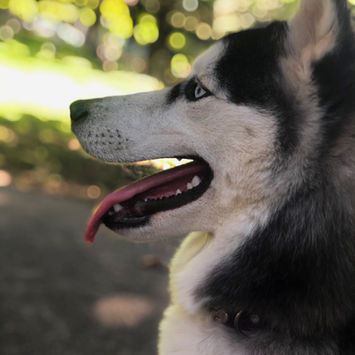Siberian Husky Dog
Siberia, Russia
Intelligent, Outgoing, Friendly, Alert, Gentle

Quick Facts
Weight
16–27 kg
Height
51–60 cm
Lifespan
12–14 years
Group
Working Group
Pros & Cons
• Striking appearance and striking blue or multicolored eyes
• Highly energetic and excellent for outdoor activities
• Friendly and good with families
• Exceptional endurance and working ability
• Requires extensive daily exercise
• Can be escape artists if not secured
• Strong prey drive may be problematic
• May be stubborn during training sessions










History & Purpose
The Siberian Husky’s legacy is steeped in the frozen expanses of Siberia, where indigenous tribes relied on these resilient dogs for transportation, sled pulling, and companionship. Bred by the Chukchi people, the Husky was developed to thrive in harsh Arctic conditions, demonstrating remarkable stamina and an uncanny ability to work in teams over long distances. Its history is one of survival and mutual reliance, as these dogs carried not only supplies but also the hopes of entire communities during bitter winters.
When Russian explorers began encountering these hardy canines, the Husky’s reputation as an indispensable working dog quickly spread beyond its native lands. In the early 20th century, Siberian Huskies were brought to North America, where their prowess in sled racing captured the public’s imagination during events like the All‑American Sled Dog Race. Their combination of beauty, endurance, and spirited independence made them favorites not only as working animals but also as family pets.
Today, Siberian Huskies continue to fascinate with their striking looks and dynamic energy. They remain popular among outdoor enthusiasts and dog sports participants who appreciate their need for vigorous exercise and mental stimulation. While their independent nature can sometimes challenge novice trainers, their friendly disposition and loyalty ensure that they remain beloved companions, carrying a legacy of adventure and resilience from the frozen north into modern households.
Common Health Issues
Hip dysplasia, eye disorders, hypothyroidism, skin issues
TOP 10 MOST POPULAR DOG BREEDS
TIPS AND ADVICE
GET IN TOUCH
